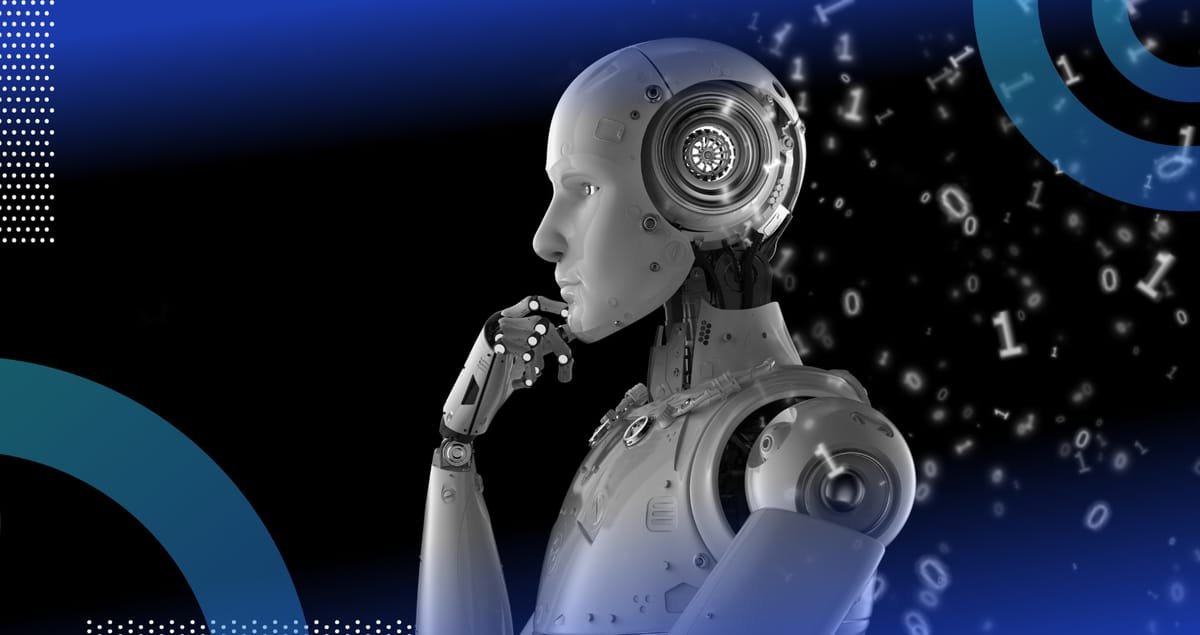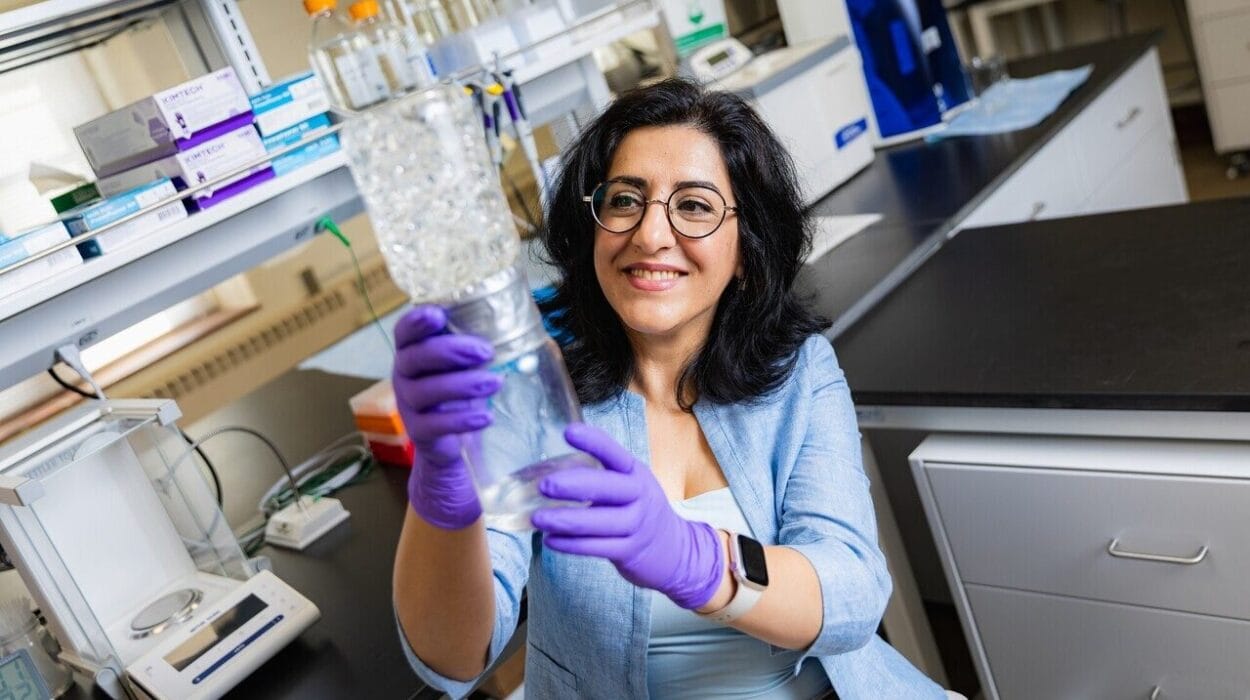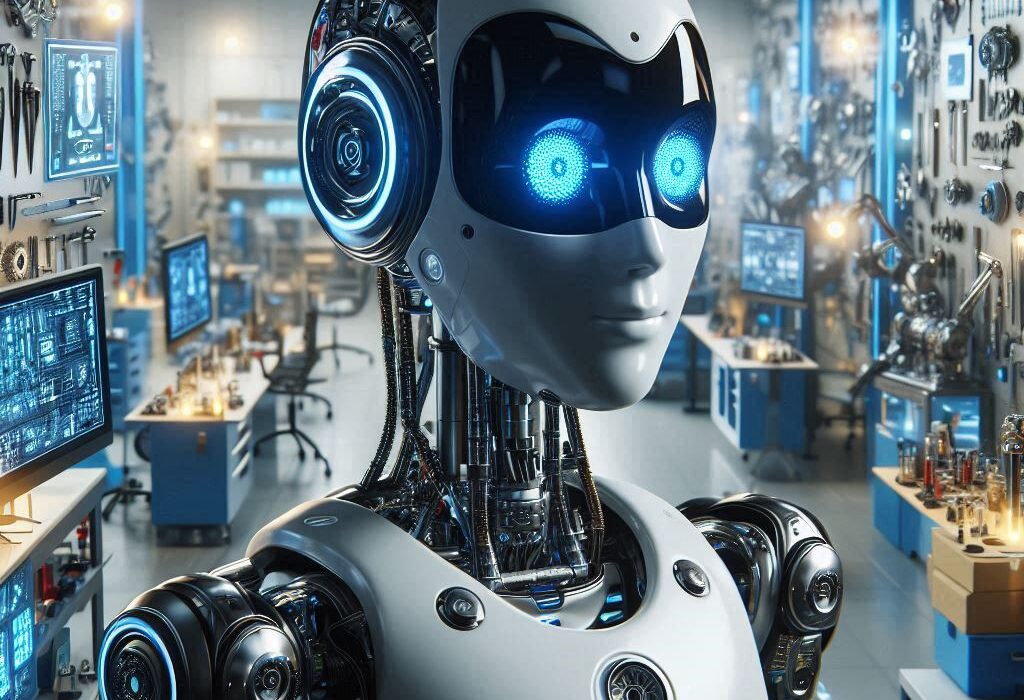At dawn, the factory floor glows under harsh LED lights. Steel beams stand like the ribcage of some metallic giant, and conveyor belts hum a steady song, as if the building itself breathes. It smells faintly of oil and metal. Once upon a time, this place would have been alive with shouts, hammering, and the orchestrated chaos of men and machines. Today, it’s different.
The machines still work. But the shouting is gone. The chaos has dissolved into silence, replaced by whispers of artificial intelligence sifting through terabytes of data. Overhead, robotic arms swing with elegant precision, guided not by human eyes but by invisible neural networks calculating paths in fractions of a second. When sparks fly, they are choreographed, part of a digital ballet that runs twenty-four hours a day without fatigue.
Welcome to the smart factory—a place where AI builds the world.
The Birth of a New Industrial Revolution
Factories have always been a crucible of change. Steam engines filled the air with black soot and rattled the earth with iron wheels. Then came electricity, assembly lines, and the precision of interchangeable parts. Computerization in the late 20th century brought machines that could be programmed but not truly “think.”
But now, in this century, the machines have begun to learn. The Industrial Internet of Things (IIoT) connects every sensor, bolt, and conveyor belt. Clouds of data swirl above the factory floor, waiting to be transformed into insight. Algorithms analyze production rates, detect anomalies, and predict failures before they happen. The line between digital and physical has blurred until the two are fused into one seamless system.
We are living in the era of Industry 4.0. It’s an age where artificial intelligence doesn’t just manage machines—it collaborates with them. It anticipates, decides, and adapts. And it’s changing how everything—from cars to toothbrushes—is made.
The Invisible Eyes of AI
Hidden in ceilings and walls, cameras and LIDAR scanners silently monitor the production lines. Each lens captures more than the human eye ever could, tracking subtle vibrations in machinery, microscopic scratches on metal surfaces, and the precise position of every object in motion. The data is streamed to machine learning models that learn to distinguish normal from abnormal.
A tiny misalignment on a conveyor belt once required human detection. Now, an AI vision system notices it immediately, halting production, signaling maintenance, or self-correcting the position. For workers, it’s like having superhuman senses—a guardian angel that never blinks.
In a factory making smartphone screens, AI vision systems scan each panel for flaws invisible to human inspectors. Hairline fractures that might escape notice are spotted instantly, preventing costly defects from reaching customers. Quality control that once took hours now happens in milliseconds.
But it’s not just about seeing. AI listens, too. Acoustic sensors catch shifts in the frequency of a motor’s hum—a clue that a bearing may be wearing down. Thermal cameras watch for hotspots, warning of electrical faults before sparks fly. The entire factory is alive, like a nervous system, sensitive to the faintest whispers of trouble.
Machines That Think Together
Long gone are the days when a machine stood alone, its intelligence sealed in its own control box. Today, machines communicate. A robotic welder in one corner of the factory can tell a conveyor belt in another to slow down because it’s temporarily overloaded. An assembly robot can request a fresh bin of parts because it senses it will run empty in 15 minutes.
This interconnectedness transforms production from a rigid chain into a flexible web. Machines adjust to variations in real time. A batch of slightly warped metal arrives? No problem—the robotic grippers automatically recalibrate their positions. A sudden rush order comes in for a custom design? The software tweaks production schedules, reprograms the robots, and shifts the supply chain without human intervention.
It’s as if the factory has developed a collective consciousness—a hive mind of steel, silicon, and code.
The Digital Twin: A Parallel Universe
Perhaps the most remarkable development in smart factories is the rise of the digital twin. Imagine a perfect virtual replica of the factory, built in meticulous detail. Every conveyor belt, every machine, every sensor exists in this digital realm. The digital twin mirrors the physical factory in real time, simulating the laws of physics, the flow of materials, even the wear on machine parts.
Engineers can test changes in the virtual world before implementing them in the real one. A new product design? Run it through the digital twin first. Want to increase line speed by 10%? Simulate it and see where bottlenecks appear. The digital twin is like a crystal ball, offering glimpses of the future.
In an automotive factory, the digital twin predicts how adding a new welding robot might affect heat distribution on a car’s chassis. It calculates whether the metal will warp or crack. It ensures that the next model rolling off the line is perfect before the first sheet of steel is even cut.
Beyond efficiency, the digital twin offers resilience. When COVID-19 struck, factories with digital twins adapted faster. Managers could simulate reduced staffing levels, reroute supply chains, and keep production running with minimal disruption. In a world increasingly shaken by pandemics, geopolitical tensions, and climate crises, the digital twin has become not just a tool of efficiency—but of survival.
From Mass Production to Mass Customization
For a century, factories were built on the principle of sameness. Henry Ford famously offered customers any color Model T—“so long as it’s black.” Standardization drove down costs but limited choice.
AI has shattered those boundaries. Today, customers want products tailored to their lives: custom-fit shoes, personalized shampoo formulas, cars in exotic color combinations. In smart factories, AI orchestrates this complexity.
Consider a sneaker manufacturer. One customer wants neon green soles. Another wants custom insoles for arch support. The AI system designs each shoe on demand, programs the robots, orders the right materials, and routes each product through the optimal manufacturing path. No human could juggle millions of unique combinations in real time—but AI can.
This shift is profound. Factories no longer just produce goods. They produce individuality. Every consumer becomes the center of the manufacturing universe.
The Dance of Robots and Humans
There’s a common fear that AI will replace human workers entirely. In truth, the future is more nuanced. Smart factories are not empty of people—they’re changing how people work.
In many modern plants, robots handle the dirty, dangerous, or tedious tasks. They lift heavy parts, weld with superheated plasma, and perform repetitive motions that would wear down human bodies. Humans, meanwhile, manage oversight, problem-solving, and creative adjustments.
A technician may wear augmented reality glasses that overlay instructions, warning symbols, and real-time machine diagnostics directly onto their field of vision. Instead of flipping through thick manuals, they see step-by-step repair guides floating in the air. AI translates complex data into clear insights, empowering workers rather than replacing them.
In one electronics factory, workers used to spend hours sorting through bins of tiny components. Now, vision-guided robots do the sorting. The workers focus on higher-value tasks—calibrating machines, inspecting final products, troubleshooting.
Yet, there’s no denying that smart factories require fewer people to produce the same output. The jobs that remain often demand new skills—digital literacy, programming, systems thinking. The industrial worker of tomorrow might be a coder in a hard hat.
AI Predicts the Future—And Saves the Present
Perhaps the single greatest gift AI offers to factories is foresight. Predictive maintenance is revolutionizing how machinery is cared for.
In the past, factories followed strict schedules: change the oil every 500 hours, replace the motor after 10,000 cycles. This worked—but often led to replacing parts too early or suffering catastrophic breakdowns if maintenance was delayed.
AI, by contrast, learns the unique heartbeat of each machine. It knows how a particular motor hums, how hot it runs, and how vibrations ripple through its bearings. When something starts to deviate—even slightly—AI raises a silent alarm.
In a sprawling steel mill, AI noticed a subtle increase in vibration frequency in a critical roller. A human might not have noticed. Days later, that roller would have shattered, halting the entire plant. Because of AI’s early warning, engineers replaced it proactively, saving millions in downtime.
It’s not just maintenance. AI forecasts raw material needs based on orders, predicts weather disruptions that might delay shipments, and even suggests price adjustments to protect profit margins.
Factories used to react to crises. Now, they anticipate them.
The Green Factory: AI and Sustainability
Modern manufacturing faces a dual challenge: produce more and pollute less. Factories are enormous consumers of energy, water, and raw materials. They also produce waste, emissions, and carbon footprints.
AI is becoming the factory’s green conscience.
In a smart factory, AI tracks energy usage in real time. It notices when a machine is running inefficiently and adjusts its settings. It schedules energy-hungry processes for times when renewable electricity is plentiful. In chemical plants, AI suggests ways to reduce heat or pressure in reactions, saving both energy and greenhouse gases.
Factories that once dumped wastewater now use AI to monitor and purify it. Sensors detect impurities at the molecular level, and AI-controlled systems add precise doses of treatment chemicals.
Sustainability isn’t just moral—it’s economic. Factories that reduce energy use save money. Those that waste less material become more competitive. As consumers demand environmentally responsible products, AI gives factories the tools to deliver.
The vision is grand: factories that not only produce goods but help heal the planet.
The Supply Chain’s Nervous System
COVID-19 exposed a truth many businesses had forgotten: supply chains are fragile. A ship stuck in the Suez Canal, a virus sweeping through ports, a political crisis—each event can disrupt manufacturing worldwide.
AI is becoming the nervous system of global supply chains. It tracks shipments, monitors ports, forecasts delays, and reroutes goods in real time. In a smart factory, AI knows exactly when raw materials will arrive and adapts production schedules accordingly.
A major electronics firm used AI to detect an upcoming shortage of semiconductor chips. By analyzing data from suppliers, global shipping schedules, and even geopolitical news, AI advised the company to buy extra inventory. When the shortage hit, competitors were forced to shut down. The smart factory kept running.
This is the ultimate power of AI: turning uncertainty into advantage.
The Factory as Creative Studio
It’s tempting to think of factories purely as places of repetition. But smart factories are becoming spaces of innovation.
Engineers no longer need to spend months building prototypes. With AI-powered simulations and digital twins, they can try hundreds of designs virtually. AI algorithms suggest improvements—lighter materials, more efficient layouts, cost-saving alternatives.
In a bicycle factory, engineers fed AI data on rider ergonomics, road vibrations, and stress points. The AI suggested a new frame geometry that no human designer had conceived. It was lighter, stronger, and absorbed shock better. The factory printed a prototype with 3D metal printing, tested it, and launched a new model in record time.
AI doesn’t just build the future—it imagines it.
Ethical Dilemmas on the Factory Floor
All this power comes with ethical questions.
Smart factories raise profound issues about privacy and data security. Sensors capture every motion of workers, every keystroke on digital terminals. While this data improves efficiency, it also opens doors to surveillance and misuse.
Workers worry about job security. As AI makes factories more efficient, fewer people are needed. Governments and industries wrestle with how to retrain displaced workers for new digital roles.
Then there’s the question of transparency. AI can be a black box. When an algorithm decides to reject a batch of parts or adjust production schedules, managers must trust decisions they sometimes don’t fully understand.
Industry leaders now call for “explainable AI”—systems that can justify their decisions in human language. Trust is essential if humans and machines are to collaborate.
A World Built by Intelligence—Natural and Artificial
So much of what we use each day—our smartphones, cars, sneakers, coffee makers—flows from factories. They are the beating heart of the global economy. Yet few people ever glimpse inside these modern cathedrals of industry.
Step into a smart factory, and you enter a world where the physical and digital merge. Conveyor belts move in perfect harmony. Robots weld steel with lightning precision. AI sifts through billions of data points, predicting the future. Human workers oversee a dance of technology more complex than any symphony.
Factories are no longer just places that produce goods. They are laboratories where humanity’s creativity collides with the raw materials of the Earth. They are proving grounds for our dreams—and our anxieties.
The story of the smart factory is ultimately a story about us. Our ingenuity created the machines. Our fears and hopes shape how they’re used. Our values determine whether this technology serves humanity—or leaves parts of it behind.
The Future Takes Shape
As you read this, AI is shaping the next evolution of factories.
Quantum computers may soon solve optimization problems that today’s supercomputers cannot touch. Robots are learning delicate tasks like sewing fabric and assembling microchips. Bio-inspired algorithms could help factories evolve even more sustainable processes.
And one day, perhaps factories will become so decentralized that your kitchen counter becomes a miniature manufacturing plant, 3D printing custom goods on demand. Or the factory might become a floating platform, shifting location based on resource availability and environmental needs.
The possibilities are breathtaking. But the underlying truth remains constant: the smart factory is not merely about machines building things. It’s about intelligence—human and artificial—intertwined to shape the objects that shape our lives.
A New Age of Makers
In this age, the sparks on the factory floor are more than molten metal. They are the flashes of an idea, of creativity, of innovation. The clank of machines echoes with a deeper meaning: the forging of a new relationship between humanity and technology.
The smart factory is a place where AI builds not only everything you use—but a future still unwritten. And as long as humans remain at the helm, guided by curiosity, ethics, and imagination, there’s no telling how extraordinary that future might become.






